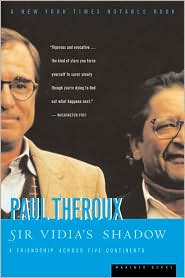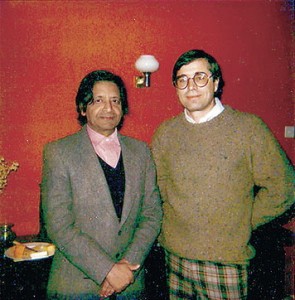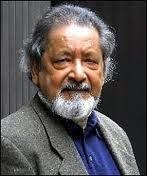“I had admired his talent. After a while, I admired nothing else [about him]. Finally, I began to wonder about his talent.”
 What began as a mentoring relationship between established Trinidadian novelist V. S. Naipaul and Paul Theroux, a young American writer working on his first novel, went on to endure as a “friendship” for thirty years as both writers traveled the world but remained in touch. They met when Theroux was a young ex-Peace Corp worker teaching in Uganda at the university in Makerere in 1966, and Naipaul, nine years his senior, became “writer-in-residence” there, though Naipaul hated teaching and mocked the writing of his students and the Makerere faculty. He did, however, recognize Theroux’s talent, and he did help and encourage him to get his novel published. Theroux, in turn, was an astute reader of Naipaul’s work, and both benefited from the relationship, at least at first.
What began as a mentoring relationship between established Trinidadian novelist V. S. Naipaul and Paul Theroux, a young American writer working on his first novel, went on to endure as a “friendship” for thirty years as both writers traveled the world but remained in touch. They met when Theroux was a young ex-Peace Corp worker teaching in Uganda at the university in Makerere in 1966, and Naipaul, nine years his senior, became “writer-in-residence” there, though Naipaul hated teaching and mocked the writing of his students and the Makerere faculty. He did, however, recognize Theroux’s talent, and he did help and encourage him to get his novel published. Theroux, in turn, was an astute reader of Naipaul’s work, and both benefited from the relationship, at least at first.

From 1967 – 1977, Theroux published ten successful novels and short story collections, all of which Theroux describes in this book, and all were praised, at least privately, by Naipaul. Somewhat less attention is paid to the almost equal number of works published by Naipaul, some of which Theroux read and helped proofread. A crusty, critical, and often cruel man, full of contradictions, Naipaul was a difficult “friend,” and when he decided that he did not like someone, there was no turning back, no forgiveness for human failings. Theroux managed to navigate that minefield of hostility for thirty years.
In fact, shortly before the first of Naipaul’s novels was published in the United States, Theroux (in 1972) wrote an introductory biography and critical assessment of Naipaul’s work, full of praise for Naipaul, and helped to create an audience for Naipaul’s work in the United States. After this somewhat effusive work was published, however, Theroux refused further interviews or commentary about Naipaul, insisting that “I will never [again] write about Naipaul. He is my friend.” That declaration is belied by the publication of this book, the last twenty-percent of which is an uninterrupted excoriation of Naipaul and his second wife at the end of the friendship with Theroux. Here Theroux shows that he is at least as unforgiving as Naipaul, with a mean streak of his own.
In tim e Theroux would become a literary star with over forty novels and books of non-fiction. Naipaul, a painstaking, often philosophical writer, eventually won the Nobel Prize in 2001, and was knighted. Though this book is fascinating for its picture of the mentoring process and of a friendship which managed to survive despite the pettiness and frequent mean-spiritedness of Naipaul, it is also a portrait of Theroux, who published this book as his own enduring form of payback.
e Theroux would become a literary star with over forty novels and books of non-fiction. Naipaul, a painstaking, often philosophical writer, eventually won the Nobel Prize in 2001, and was knighted. Though this book is fascinating for its picture of the mentoring process and of a friendship which managed to survive despite the pettiness and frequent mean-spiritedness of Naipaul, it is also a portrait of Theroux, who published this book as his own enduring form of payback.
ALSO by Theroux, THE LAST TRAIN TO ZONA VERDE (2013), about his journey from Capetown up the west coast of Africa and DARK STAR SAFARI, about his 2002 trip from Egypt to South Africa.
Notes: The author’s photo appears on his Facebook page.
A 1986 photo of V. S. Naipaul with Paul Theroux appears on http://www.telegraph.co.uk/
